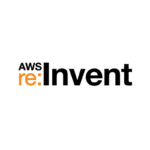I recently read Goliath, by Matt Stoller. It was, I’ll be honest, hard going. Not because it wasn’t interesting or because the writing was bad. Just because it’s a dry subject and there are a lot of people involved.
The book is about how we (the USA, there’s really no coverage of any other country) think about the economy. Who is in charge? Big business, or people opposed to big business, who Stoller calls anti monopolists, and who most often act through government institutions.
The author starts with Teddy Roosevelt and the early 1900s, covers Wilson’s presidency (I had no idea he was so progressive, nor what an impact Brandeis had), the 1920s and the power of the financier and secretary of Treasury Andrew Mellon. The Great Depression gets some interesting coverage and we learn about how Mellon was almost impeached (he resigned before the House took up the matter). The anti monopolists were ascendant in the 1930s, interestingly in part because of fear of fascism coming to the USA. During the 1940s and 1950s when there was a pretty firm understanding that large enterprises were not good for the country. This was based on an shared understanding of the causes of the Depression. Then the Chicago school begins and starts to chip away at the intellectual underpinnings of the anti monopolist move. This combines with a re-imagining of the American populace as consumers rather that small business owners and farmers.
This accelerates in the 1970s, and the fed starts to rescue failing enterprises like Penn Central. In the 1980s the author discusses Michael Milken and how he ran the junk bond markets through a combination of market making and outright fraud. He also talks about how the savings and loans crises and the uneven unwinding of regulation affect the economy. He also covers briefly the rise of Walmart. Stoller also discusses turning points where the free-market philosophy could have been reversed, but instead, due to a lack of understanding of the monopolistic roots of the Great Depression, it is not. This happens with both Bill Clinton and Barack Obama, both of whom came to power during economic downturns, and both of whom followed financiers’ advice. At the end he discusses how the intellectual foundation of anti monopolyism is being rebuilt, and invites everyone to join.
The book was much more interesting to me when it was covering earlier history. He threads a lot of it together by talking about Wright Patman, a Texas congressman who was a valiant defender of the anti monopoly practices and institutions that were created after the Depression (the FTC, the Justice Department’s Antitrust division).
This book, long and dry as it was at times, was important for two reasons. First, you have to know history before you can understand the current day. Second, there’s a lot of populist anger (justified in my mind) about the way that the Great Recession was handled, and I think that is shown in both Trump and some of the current Democratic candidates. I’m very interested in that anger being harnessed in as constructive a way as possible. I also think that it’s a valueable conversation to have about the tradeoff between economic efficiency and economic resilience. From what I’ve read of systems thinking, the way the US economy has been structured since the 1980s has been tilted towards efficiency, but is that the right answer? I don’t know, but I do know that I believe that the economy exists to serve society, not the other way around, and so if a democratic society wants to restructure the economy, that’s fine by me.
 So I’ve been a speaker wrangler for the
So I’ve been a speaker wrangler for the  I’m excited to be heading to AWS re:Invent this week. I’ve never been to Las Vegas (other than stopping at a Chipotle on the outskirts on the way to SoCal), so I’m looking forward to seeing the Strip. I’ve heard it’s a bit of a madhouse, but I did go to the Kentucky Derby this year, so we’ll see how it compares.
I’m excited to be heading to AWS re:Invent this week. I’ve never been to Las Vegas (other than stopping at a Chipotle on the outskirts on the way to SoCal), so I’m looking forward to seeing the Strip. I’ve heard it’s a bit of a madhouse, but I did go to the Kentucky Derby this year, so we’ll see how it compares. For a span from 2002 to 2019, I almost never had a work computer. There was one or two times where a contract provided a computer. But primarily my work computer where I did, you know, my work, and my home computer, where I worked on side projects and did my writing and personal internet access, were one and the same.
For a span from 2002 to 2019, I almost never had a work computer. There was one or two times where a contract provided a computer. But primarily my work computer where I did, you know, my work, and my home computer, where I worked on side projects and did my writing and personal internet access, were one and the same. Wow, 16 years of blogging. For the record, this is the 992nd post.
Wow, 16 years of blogging. For the record, this is the 992nd post. I attended
I attended 